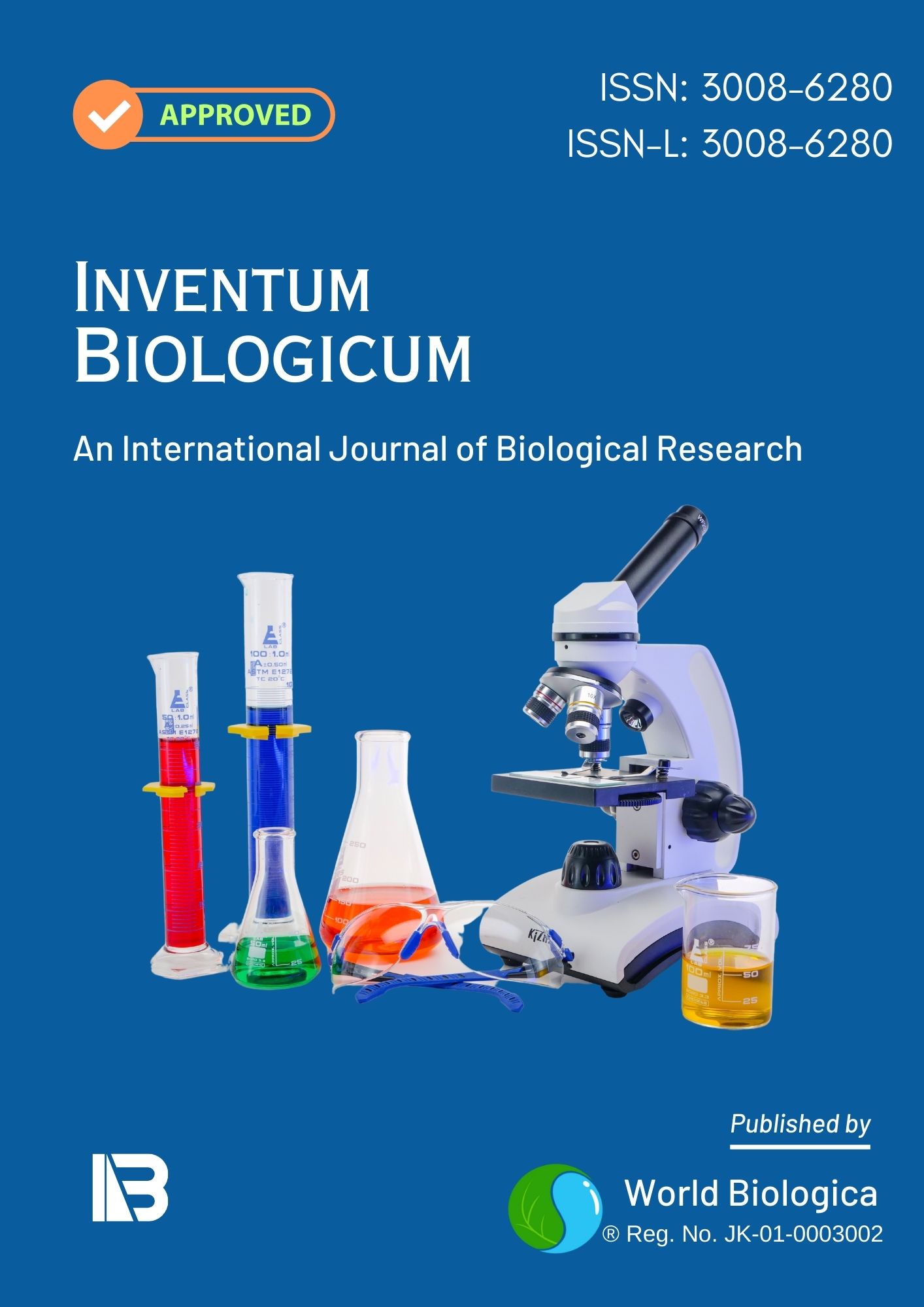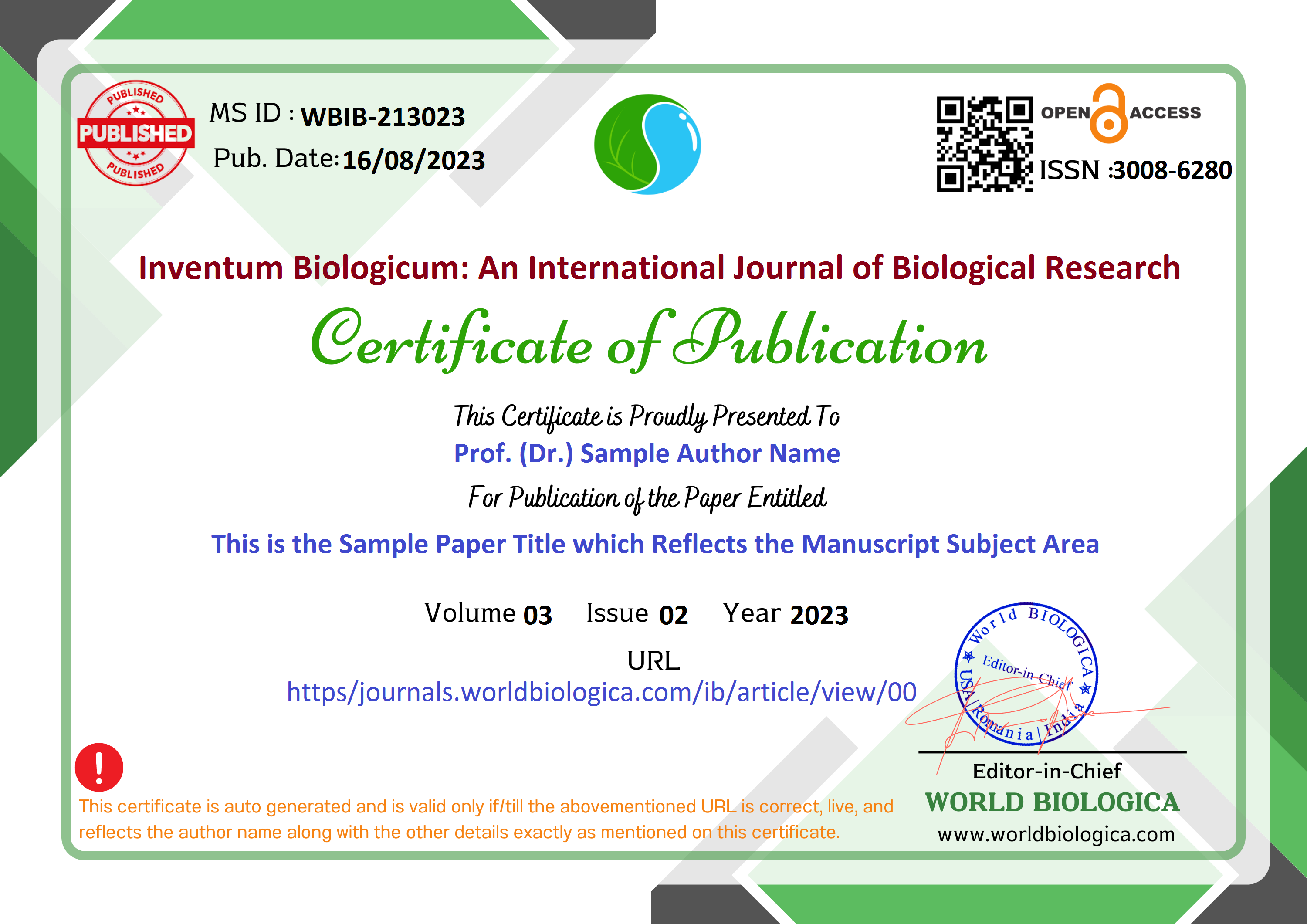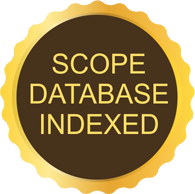Phytocompounds as Potent SARS‐CoV‐2 Main Protease Inhibitors
A Molecular Docking Study
Keywords:
SARS-CoV-2, Corona virus disease, Curcumin, Phytol, Molecular dockingAbstract
A novel coronavirus (CoV) strain named SARS‐CoV‐2 identified in Wuhan, China has threatened millions of lives and with mortality of more than 6 million world-wide in the ongoing pandemic outbreak. Lack of specific treatment for coronavirus disease has motivated researchers globally for drug discovery and in the current investigation we have explored phytocompounds as potential SARS‐CoV‐2 main protease inhibitors, using a molecular docking study. SARS‐CoV‐2 6y84 and 6lu7 domains were docked with curcumin, phytol, ά-naphthoflavone and ursolic acid and the analysis was carried out. Hydroxychloroquine and Favipiravir were used as standards for comparison. The binding energies obtained from the docking of 6y84with native ligand curcumin, phytol, ά-naphthoflavone, ursolic acid, remdesevir and favipiravir were between -8.4 to -13.1 kcal/mol. Therefore, phytol, ursolic acid, curcumin and ά-naphthoflavone appeared to have the best potential to act as SARS‐CoV‐2 MPRO inhibitors and may prove to be beneficial in the treatment of this corona virus disease.
Downloads
References
Wuhan Municipal Health Commission. 2019, December 31). Wuhan Municipal Health and Health Commission's briefing on the current pneumonia epidemic situation in our city,. Retrieved from http://wjw.wuhan.gov.cn/front/web/showDetail/2019123108989
World Health Organisation. 2020, April 14). Coronavirus disease (COVID-19) outbreak situation,. Retrieved from https://www.who.int/emergencies/diseases/novel-coronavirus-2019
Lu R, Zhao X, Li J, Niu P, Yang B, Wu H, Tan W (2020). Genomic characterisation and epidemiology of 2019 novel coronavirus: implications for virus origins and receptor binding. The Lancet, 395(10224), 565-574. doi: 10.1016/s0140-6736(20)30251-8
Paraskevis D, Kostaki E G, Magiorkinis G, Panayiotakopoulos G, Sourvinos, G, & Tsiodras, S (2020). Full-genome evolutionary analysis of the novel corona virus (2019-nCoV) rejects the hypothesis of emergence as a result of a recent recombination event. Infection, Genetics and Evolution, 79, 104212. doi: 10.1016/j.meegid.2020.104212
Zhou P, Yang X-L., Wang X-G., Hu B, Zhang L, Zhang W, Shi Z-L (2020). A pneumonia outbreak associated with a new coronavirus of probable bat origin. Nature, 579(7798), 270-273. doi: 10.1038/s41586-020-2012-7
Zhu N, Zhang D, Wang, W, Li, X, Yang B, Song J, Tan, W (2020). A Novel Coronavirus from Patients with Pneumonia in China, 2019. New England Journal of Medicine, 382(8), 727-733. doi: 10.1056/NEJMoa2001017
Chen N, Zhou M, Dong X, Qu J, Gong F, Han Y, Zhang L (2020). Epidemiological and clinical characteristics of 99 cases of 2019 novel coronavirus pneumonia in Wuhan, China: a descriptive study. The Lancet, 395(10223), 507-513. doi: 10.1016/s0140-6736(20)30211-7
He F, Deng, Y, & Li W (2020). Coronavirus Disease 2019 (COVID‐19): What we know? Journal of Medical Virology. doi: 10.1002/jmv.25766
Wang D, Hu B, Hu C, Zhu F, Liu X, Zhang J, Peng Z (2020). Clinical Characteristics of 138 Hospitalized Patients With 2019 Novel Coronavirus–Infected Pneumonia in Wuhan, China. Jama, 323(11), 1061. doi: 10.1001/jama.2020.1585
Wu Z, & McGoogan J M (2020). Characteristics of and Important Lessons From the Coronavirus Disease 2019 (COVID-19) Outbreak in China. Jama. doi: 10.1001/jama.2020.2648
Anand K, Ziebuhr J, Wadhwani P, Mesters J R, & Hilgenfeld R (2003). Coronavirus main proteinase (3CLpro) structure: basis for design of anti-SARS drugs. Science, 300(5626), 1763-1767. doi: 10.1126/science.1085658
Hilgenfeld R (2014). From SARS to MERS: crystallographic studies on coronaviral proteases enable antiviral drug design. FEBS J, 281(18), 4085-4096. doi: 10.1111/febs.12936
Zhang L, Lin D, Sun X, Curth U, Drosten, C, Sauerhering L, Hilgenfeld R (2020). Crystal structure of SARS-CoV-2 main protease provides a basis for design of improved α-ketoamide inhibitors. Science, eabb3405. doi: 10.1126/science.abb3405
Navan C. (2020). Possible Drug Candidates for COVID-19.
Furuta Y, Komeno T, & Nakamura T (2017). Favipiravir (T-705), a broad spectrum inhibitor of viral RNA
polymerase. Proceedings of the Japan Academy, Series B, 93(7), 449-463. doi: 10.2183/pjab.93.027
Trott, O., & Olson, A. J. (2010). AutoDock Vina: improving the speed and accuracy of docking with a new scoring function, efficient optimization, and multithreading. Journal of computational chemistry, 31(2), 455-461.doi: https://doi.org/10.1002/jcc.21334
Morris, G. M., Huey, R., Lindstrom, W., Sanner, M. F., Belew, R. K., Goodsell, D. S., & Olson, A. J. (2009). AutoDock4 and AutoDockTools4: Automated docking with selective receptor flexibility. Journal of computational chemistry, 30(16), 2785-2791.doi: https://doi.org/10.1002/jcc.21334
Morris, G. M., Goodsell, D. S., Halliday, R. S., Huey, R., Hart, W. E., Belew, R. K., & Olson, A. J. (1998). Automated docking using a Lamarckian genetic algorithm and an empirical binding free energy function. Journal of computational chemistry, 19(14), 1639-1662.doi: https://doi.org/10.1002/jcc.21256
Niyogi, P., Pattnaik, S., Maharana, L., Mohapatra, R., & Kolet, S. P. (2019). An epidemiological correlation of oral candidiasis mice model study of an isolate from Mollugo pentaphylla Linn. and in silico docking approach. Iranian Journal of Science and Technology, Transactions A: Science, 43(3), 785-799.doi:
Costa J P, Ferreira P B, De Sousa D P, Jordan J, & Freitas R M (2012). Anticonvulsant effect of phytol in a pilocarpine model in mice. Neuroscience Letters, 523(2), 115-118. doi: 10.1016/j.neulet.2012.06.055
Chowdhury R R, & Ghosh, S K (2012). Phytol-derived novel isoprenoid immunostimulants. Front Immunol, 3, 49. doi: 10.3389/fimmu.2012.00049
Lim S Y, Bauermeister A, Kjonaas R A, & Ghosh S K (2006). Phytol-based novel adjuvants in vaccine formulation: 2. Assessment of efficacy in the induction of protective immune responses to lethal bacterial infections in mice. J Immune Based Ther Vaccines, 4, 5. doi: 10.1186/1476-8518-4-5
Cheng Y W, Li C H, Lee C C, & Kang, J J (2003). Alpha-naphthoflavone induces vasorelaxation through the induction of extracellular calcium influx and NO formation in endothelium. Naunyn Schmiedebergs Arch Pharmacol, 368(5), 377-385. doi: 10.1007/s00210-003-0820-6
Shome S, Talukdar A D, Choudhury M D, Bhattacharya M K, & Upadhyaya H (2016). Curcumin as potential therapeutic natural product: a nanobiotechnological perspective. Journal of Pharmacy and Pharmacology, 68(12), 1481-1500. doi: 10.1111/jphp.12611
Praditya D, Kirchhoff L, Bruning J, Rachmawati H, Steinmann J, & Steinmann E (2019). Anti-infective Properties of the Golden Spice Curcumin. Front Microbiol, 10, 912. doi: 10.3389/fmicb.2019.00912
Mathew D, & Hsu W-L (2018). Antiviral potential of curcumin. Journal of Functional Foods, 40, 692-699. doi: 10.1016/j.jff.2017.12.017
Ahmad A, Abuzinadah M F, Alkreathy H M, Banaganapalli B, & Mujeeb M (2018). Ursolic acid rich Ocimum sanctum L leaf extract loaded nanostructured lipid carriers ameliorate adjuvant induced arthritis in rats by inhibition of COX-1, COX-2, TNF-alpha and IL-1: Pharmacological and docking studies. PLoS One, 13(3), e0193451. doi: 10.1371/journal.pone.0193451
Seo D Y, Lee S R, Heo J-W, No M-H, Rhee B D, Ko K S, Han J (2018). Ursolic acid in health and disease. The Korean Journal of Physiology & Pharmacology, 22(3), 235. doi: 10.4196/kjpp.2018.22.3.235
Downloads
-
Download PDF
 Abstract Views: 83,
Abstract Views: 83,  Download PDF: 54
Download PDF: 54
Published
How to Cite
Issue
Section
License
Copyright (c) 2024 Inventum Biologicum: An International Journal of Biological Research

This work is licensed under a Creative Commons Attribution-NonCommercial-NoDerivatives 4.0 International License.


















